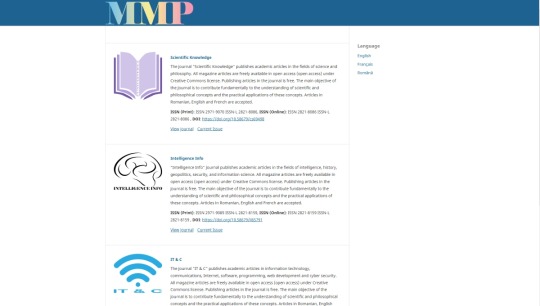#preprint
Text
Sigh... It doesn't get much more AIDS-like than this...
1 note
·
View note
Link
I always advise reading the whole thing, but here are excerpts.
(Although this post is a response to one pre-print, it matches up with hordes of data / research we’ve seen since 2020 — at this point it’s not in question that this virus affects the entire vascular system, and can cause heart attacks and strokes even in younger people.)
The short version is that even among those who had COVID but no symptoms, there is tissue damage.
When cells die, their contents are released into the surrounding tissue. Parts of the DNA of the cell are also released and can be detected in the bloodstream. That’s what is meant by cell-free DNA (cfDNA). Epigenetic liquid biopsies study the cfDNA and can determine the type of cells that it came from, based on characteristic molecular structures. The authors state “Patients with severe COVID-19 had a massive elevation of circulating cell-free DNA (cfDNA) levels, which originated in lung epithelial cells, cardiomyocytes, vascular endothelial cells and erythroblasts, suggesting increased cell death or turnover in these tissues.”
Cardiomyocytes are the muscle cells of the heart that contract to provide the heartbeat. When a large area of these become damaged, it is called a myocardial infarction, or commonly called a heart attack.
...
The damage to the vascular endothelium is really one of the most critical things to understand about COVID. It is the layer of cells lining blood vessels.
... When that occurs, capillaries can be occluded, which would lead to reduced (or no) oxygen flow to the tissue supplied by the capillary.
... “Patients with severe COVID-19 have a higher concentration of cfDNA, originating in affected tissues.” When endothelial damage occurs and microthrombi form on a large scale, such as in severe COVID, it leads to acute organ damage and potentially organ failure.The damage of clot formation is evident in a stroke.
... Endothelial damage is not only dangerous due to clot formation, but also because the endothelial cells are responsible for the transfer of oxygen from red blood cells into the surrounding tissue, which can also lead to that tissue being starved of oxygen and potential death of those cells, which is called ischemia.
I suspect that part of the reason that COVID seems less damaging in younger or healthier populations is that they can more easily handle some tissue damage since the surrounding unaffected tissue can take on some of the load of the damaged tissue. However, as that unaffected tissue ages, it won’t work quite as efficiently as when it was young and healthy, and the impacts of the COVID infection will start manifesting themselves as a number of chronic diseases. The fact that we are seeing many of these in such a short time is extremely concerning. It suggests that we will see massive amounts of chronic diseases among people who had COVID infections in the future. You can find information on some of these broken down by organ system on this page. Click the link of the system to see some of the studies.
#covid#long covid#heart attack#heart disease#chronic illness#stroke#mild covid#covid is not mild#blog#study#preprint
4 notes
·
View notes
Text
Trei noi baze de date academice, pentru articole publicate în jurnale, cărți, și preprint
Au fost lansate trei noi site-uri web folosind folosind platformele software de la Public Knowledge Project (PKP), care se concentrează pe importanța disponibilității gratuite a rezultatelor cercetării prin politici de acces deschis și pe dezvoltarea de strategii pentru a face acest lucru posibil, inclusiv soluții software specifice. Scopul principal este îmbunătățirea calității academice și…

View On WordPress
0 notes
Text
Park et al. (2023) Sound reconstruction from human brain activity via a generative model with brain-like auditory features
0 notes
Text
Lobster shell microbes, epizootic shell disease, and climate change manuscript is published!
A collaborative paper on lobster shell bacteria has just been published in the journal iScience: “Water temperature and disease alters bacterial diversity and cultivability from American Lobster (Homarus americanus) shells.” This paper investigates what happens to bacterial communities on healthy and sick lobsters as they experience different water temperatures for a year.
You can read the paper…

View On WordPress
#16S rRNA#aquaculture#climate and microbes#climate change#epizootic shell disease#Lab Work#lobsters#maine#preprint#shell bacteria#UMaine#Updates
1 note
·
View note
Link
Background
There is mounting evidence that SARS-CoV-2 targets tissues beyond the respiratory tract. Long-term sequelae after COVID-19 are frequent and of major concern. Prolonged virus detection in the gut has been particularly intriguing. Of note, SARS-CoV-2 infection also disturbs the gut microbiota composition, a finding linked with disease severity in patients with COVID-19. Here, we aimed to characterize the functional role of the gut microbiota in the long-term consequences of COVID-19. To this end, we characterized the gut microbiota from COVID-19 human subjects and followed the effects of human fecal transfer to germ-free mice.
Results
The gut microbiota of post-COVID subjects (up to 4 months from the initial positive test) revealed a remarkable predominance of Enterobacteriaceae strains with multidrug-resistance phenotype compared to healthy controls. After fecal transfer to germ-free mice, animals receiving samples from post-COVID subjects displayed higher lung inflammation and increased susceptibility to pulmonary infection caused by an antimicrobial resistant Klebsiella pneumoniae strain. These mice also showed poorer cognitive performance associated with increased expression of TNF-α, reduced levels of brain-derived neurotrophic factor-BDNF and postsynaptic density protein-PSD-95 in the brain, as well as alterations of several biochemical pathways. These alterations were observed in the absence of SARS-CoV-2, suggesting that alterations in the gut microbiota caused them. Consistent with this hypothesis, brain dysfunctions induced in a mouse model of coronavirus infection were partially prevented by modulation of the microbiota via treatment with the commensal probiotic bacteria Bifidobacterium longum 51A.
Discussion
our post-COVID subject group did not report higher antibiotic use compared to controls which raises concerns of a “silent” spread of antimicrobial resistance in the environment.
We found a predominant increase of AMR Klebsiella sp. in the gut microbiota of post-COVID subjects. This bacterium belongs to the ESKAPE group of antimicrobial-resistant bacteria and has been reported to be responsible for most nosocomial pneumonia infections caused in hospitalized patients with COVID-19
mice receiving a fecal transfer from post-COVID donors presented worse lung injury after infection with K. pneumoniae reinforcing the connection between gut and lung [75, 76]. Thus, modulation of the gut microbiota may be used as a strategy to prevent or improve host defense against bacteria in the lung.
We found an increase of cultivable Enterobacteriaceae in the lung of mice that received a fecal transfer from post-COVID donors, which was not observed in controls. This lung incremental colonization of LPS-producing bacterial could compromise the lung defenses against bacteria.
Previous studies have suggested that even minimal alterations in the lung microbiome were enough to affect the central nervous system, while major changes in gut microbiome were necessary [85]. Thus, lung alterations induced by the post-COVID microbiota in humanized microbiota mice might be associated with neurological outcomes. Our findings that the post-COVID microbiota can induce memory impairment in humanized microbiota mice are in accordance with the neurological outcomes in post-acute COVID in humans.
Production of metabolites, particularly SCFAs, by the gut microbiota is a major mechanism that explains the gut-lung and gut-brain connections [20, 88]. We found reduced levels of SCFAs, mostly propionate, in fecal samples from post-COVID donors, which may affect the gut-brain connection and help explain the neurological sequelae observed in post-acute COVID. Propionate has been shown to modulate blood-brain barrier integrity and the inflammatory response in microglia [85]. In line with our findings, decreased SCFA levels were associated with Alzheimer's disease in clinical studies and experimental models [89–91]. Biological effects of SCFAs are triggered mainly by direct binding to specific G-protein coupled receptors (GPCRs), such as GPR41 and GPR43, which are expressed in both peripheral and central nervous system [92, 93]. We also observed clear differences in the systemic levels of host factors, such as I-FABP and IL-10, indicating the loss in intestinal homeostasis in post-COVID subjects compared to controls. Indeed, I-FABP has been shown to be a relevant biomarker for COVID-19 disease prognostic
the probiotic B. longum 51A strain is the ability to produce high levels of SCFAs, which has beneficial effects in controlling host inflammation, particularly in the lung
Conclusions
Our results show prolonged impact of SARS-CoV-2 infection in the gut microbiota that persists even after the individuals have cleared the virus. Increased Enterobacteriaceae with antimicrobial resistance phenotype were of particular concern. Moreover, microbiota transfer from post-COVID subjects induced loss of brain cognitive functions and impaired lung defense in mice. Altogether, our work emphasizes the importance of microbiota as a target for therapies to help treat post-COVID sequelae.
0 notes
Text

The domain name TheJapanProject.com is available for purchase. To buy just visit www.thejapanproject.com itself & select Buy Now or else get it from your registrar like godaddy, dynadot, namesilo etc. Also available on installments & rent. Prime Keywords : the japan project
#thejapanproject#the#japan#project#the_japan_project#projectjapanthe#project_japan_the#brandable#engraved#business#occupation#designing#calculating#printing#preprint
0 notes
Text
I really love that given the invention of a magical recording device, Rozemyne’s use of it is to create a cute stuffed animal with quotes from someone you love who is far away
And Ferdinand’s was to start recording incriminating evidence
And yet Rozemyne is the one who used it to justify a little light coup
#preprint spoilers#part5vol8#ascendance of a bookworm spoilers#spoilers#本好きの下剋上#ascendance of a bookworm
41 notes
·
View notes
Text





1/8 Excellent Model Heart Catch Pretty Cure! Cure Moonlight (MegaHouse)
94 notes
·
View notes
Text
Read an AI hype preprint because apparently I am not very discerning with my time. There's a lot that's kinda funny about it.
So the title of this paper is "People cannot distinguish GPT-4 from a human in a Turing test". The purpose of the title is evidently not to provide a clear reference for other researchers, but rather to produce AI hype and be reproduced in credulous headlines, as we'll see shortly.
The paper opens with a brief history and presentation of the Turing test. The important features are that the interrogator questions an AI and a human and is tasked with identifying the AI and has 5 minutes to do so. Then it presents the testing setup they used. 500 people are recruited, they are split into five categories of 100 each (making the percentage signs redundant), 400 interrogators, who talk to GPT-4, GPT-3.5, ELIZA, or a human (from the remaining 100) for five minutes and then are asked to determine if they talked to a human or not. It is a two-player setup. Why, though? You just explained that the Turing test was formulated on the premise of three participants, what is the reasoning for departing from that? Oh, ok, here it is:
We used a two-player formulation of the game, where a single human interrogator conversed with a single witness who was either a human or a machine. While this differs from Turing’s original three-player formulation, it has become a standard operationalisation of the test because it eliminates the confound of the third player’s humanlikeness and is easier to implement
WHAT? The "confound" of the third player's humanlikeness is the point! That is part of the premise of the test, it's trying to test/compare humanlikeness. Margarine marketers are more honest than this. By the end of the Introduction section of this paper titled "People cannot distinguish GPT-4 from a human in a Turing test" the authors have explained that they did not administer a Turing test because they were pretty sure that if they did GPT-4 would fail and they wanted a positive result so they designed their own test it could succeed instead. This is just outright fraud!
It's also kind of weird to talk about "GPT-4" succeeding at the test, because it was in fact a specific elaborate prompt of GPT-4, selected on the basis of prior research that had found it the most effective strategy. I mean, it needs to be prompted with something and it's not entirely clear to me why I think something more neutral without specific listed strategies would be a more honest implementation but I do. I guess it's because the way this finding is presented it's claiming that the AI is good at deception, and I mean it just really isn't. The AI didn't come up with the idea of doing an exploratory study with a wide variety of prompts (or for that matter, come up with the prompts themselves) and then using the ones that worked best, that was the researchers. The researchers who have pretty obviously rigged the whole study, in fact.
There is also some possible arguable dishonesty in the way the situation was presented to the human participants. They say the participants were told they would be put in conversation with either a human or a machine. Now, unless they were told more than is mentioned, I contend those people would have been entitled to treat this as an implication that those were equally likely possibilities, especially given the analogy with the actual Turing test, in which the population sizes of humans and machines are necessarily identical. Note also that all in all the interrogators turned out just a little under 50% human verdicts. In fact, the probability that they would be assigned to speak to a machine was 75%. If the interrogators had been told that there was only a 25% probability they would be assigned to speak to a human, would they have been more critical? Would they have assigned closer to 25% human verdicts? Even if it weren't that much closer, I suspect it would bring the GPT-4 success rate below 50%, which was treated as an important benchmark for god knows what reason. It might also bring the human success rate below 50%, of course. All of this could have been avoided by simply running the actual Turing test, but again, GPT-4 would have failed so they couldn't do that.
I wouldn't be too surprised if this paper did get accepted without major revisions, science is as vulnerable to hype cycles as everyone else, but if it does then what an indictment of the field (hm, actually, what field, I don't think "dicking around with GPT" has really been standardized yet).
#paper was coauthored by a PhD student (who should know better) and his thesis adviser (who should REALLY know better)#hopefully the preprint status will make the media feel weird about pushing this “result” too hard for now#but some of the less discerning sources have already run with it
8 notes
·
View notes
Text
Chirping With Glee
from The Shimmering Voyage Vol. 3
Yijun Jiang, HOYO-MiX
#genshin#genshin impact#the shimmering voyage vol. 3#overworld#veluriyam mirage#preprints#pavilion of hermits#plays in preprints and the pavilion of hermits#yijun jiang
8 notes
·
View notes
Text
i keep seeing screenrant articles and stuff (most recently) that are all "*gasp!* the toymaker has fixed continuity in doctor who by saying that actually it's all a mash up of different timelines!" and every time i'm just like yeah???? that isn't new that's literally the entire show
#el speaks#doctor who#dw 60th#google has long since figured out what I'm into#(apparently it's doctor who and archaeology and quantum mechanics in case you were wondering)#and i am occasionally a sucker for that specific kind of clickbait that's like#NEW STUDY SUGGESTS UNIVERSE MAY ACTUALLY BE TWICE AS OLD AS WE THOUGHT#where you can just take one look at the headline and go#nah#nah that's preeeeeeeetty obviously a massive exaggeration of conclusions made by a single preprint#maybe a chance that the authors would agree with the headline because they're going a little out there#but probably even they would say it's an exaggeration#the REAL exciting stem headlines are like#we found the first aperiodic monotile (it's shaped like a hat)#that's when you know you've found the good stuff#(the actual headlines about that were much less funny but I don't remember any examples because they weren't very interesting)#sometimes less interesting headlines = more interesting stories#but also sometimes i just want to read some dumb shit that's completely nonsensical but also 100% completely benign#because you know what? sometimes ya just gotta get way too into string theory and that's fine#fringe physics beliefs generally have utterly no impact on one's actual relationship to the world around them#and anyway how big can the overlap between people who care about this shit and people who believe this shit be?#wait what am i talking about now? i started out talking about doctor who#oh well#that's what the internet is for
2 notes
·
View notes
Text
i hope we get the skin revamp in the new year
#instant reprints is gonna be SUCH a gamechanger#esp for ppl who preprint one copy before opening preorders#i don't do that but its a valid strategy
5 notes
·
View notes
Text
Cheng et al. (2023) Reconstructing visual illusory experiences from human brain activity
0 notes
Text
Lobster shell microbes, epizootic shell disease, and climate change preprint manuscript is now online
Lobster shell microbes, epizootic shell disease, and climate change preprint manuscript is now online
It’s been a few years in the making, but our draft manuscript on lobster shell microbes, epizootic shell disease, and climate change is available online as a preprint (not yet peer reviewed)! You can read the preprint here, and the summary is below.
I joined this project back in the summer of 2020, when I was given a large 16S rRNA gene sequence dataset of bacterial communities from the shells…

View On WordPress
#16S rRNA#aquaculture#climate and microbes#climate change#epizootic shell disease#lobsters#maine#preprint#shell bacteria#UMaine#Updates
1 note
·
View note
Text
the brief summary here is that the supreme court made a decision in 2019 regarding the double jeopardy clause that hinged on alito's argument about a sixteenth-century english common law case, and two legal scholars in england got so annoyed about it that they went and tracked down the crumbly old court records to point out that alito was full of shit (here's more of the original research). as one of the legal scholars who worked on the project says, not convinced that the united states should be so aggressively originalist, but it would help if they got the history right
6 notes
·
View notes